International Women’s Day in Mexico: Girls hit the streets to fight for their safety

On March 8th, in the developed countries, women are given flowers and the virtual world is overrun by pathetic confessions. In Mexico, windows are boarded up and monuments fortified. Angry women go to get justice.
According to statistics, an average of more than ten women are murdered every day in Mexico, and every year the authorities register around 1 000 "feminicidios", i.e. murders directly motivated by the fact that the victim is a woman.
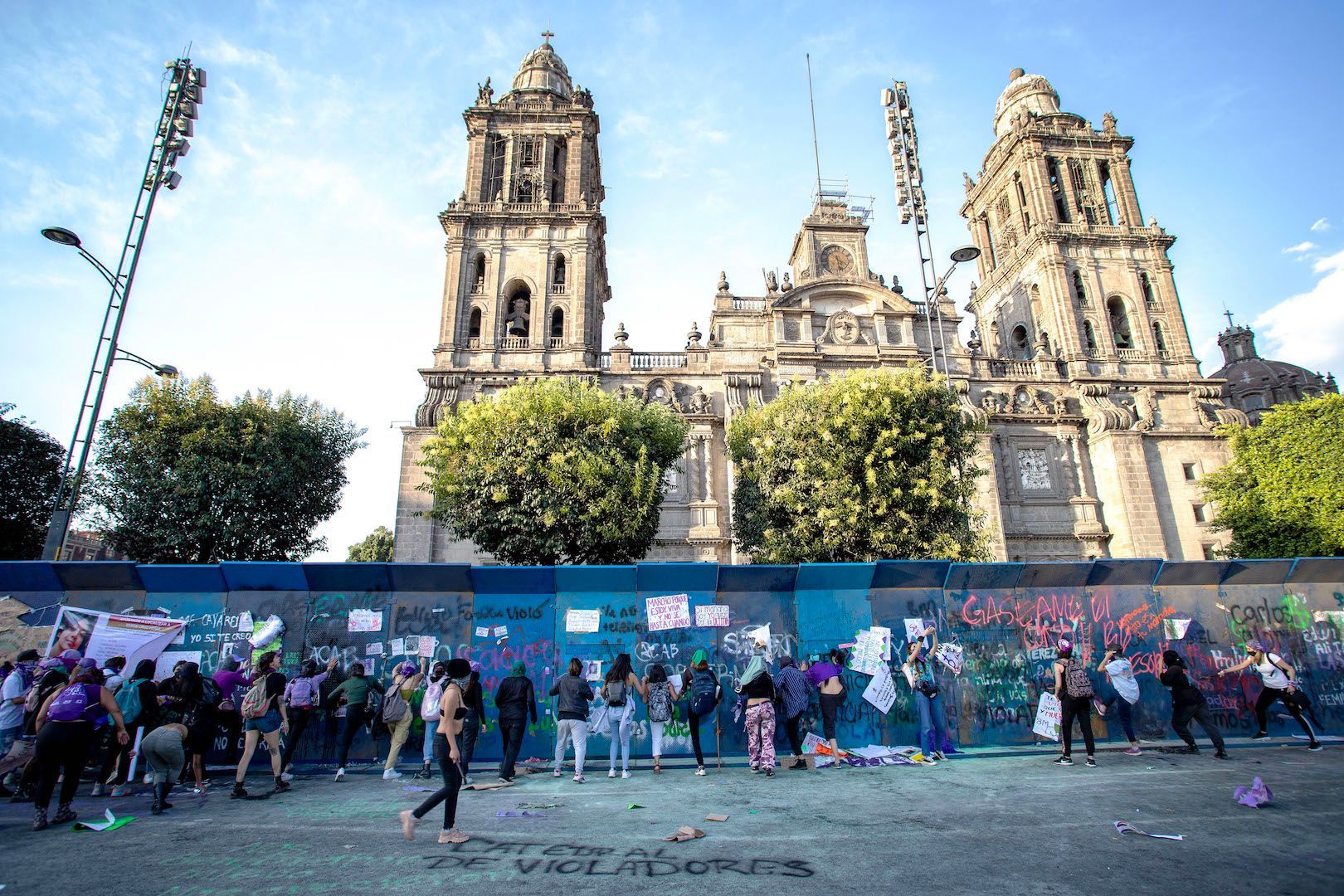
In the past year, the Executive Secretariat of the National Public Security System recorded 3,754 women killed, a third of which, 947 cases, were investigated as femicida (see box), the rest (2,807) as "simple" homicide. Which makes last year the year with the second highest number of victims of this crime after 2019, which ended with 2,875 victims.
Femicide is the name given to the murder of a woman because of her gender. It is the most serious form of discrimination against women. This gender-based crime is usually preceded by prolonged threats, intimidation, domestic or sexual violence, etc. (Wiki)
Cases of brutality against women being committed by state agencies themselves, such as the police, are also rampant. According to campaigners, deep-rooted machismo, plus widespread impunity for perpetrators and inaction by authorities are to blame. The latter claim to be taking the necessary steps to remedy the situation, which they say is improving.
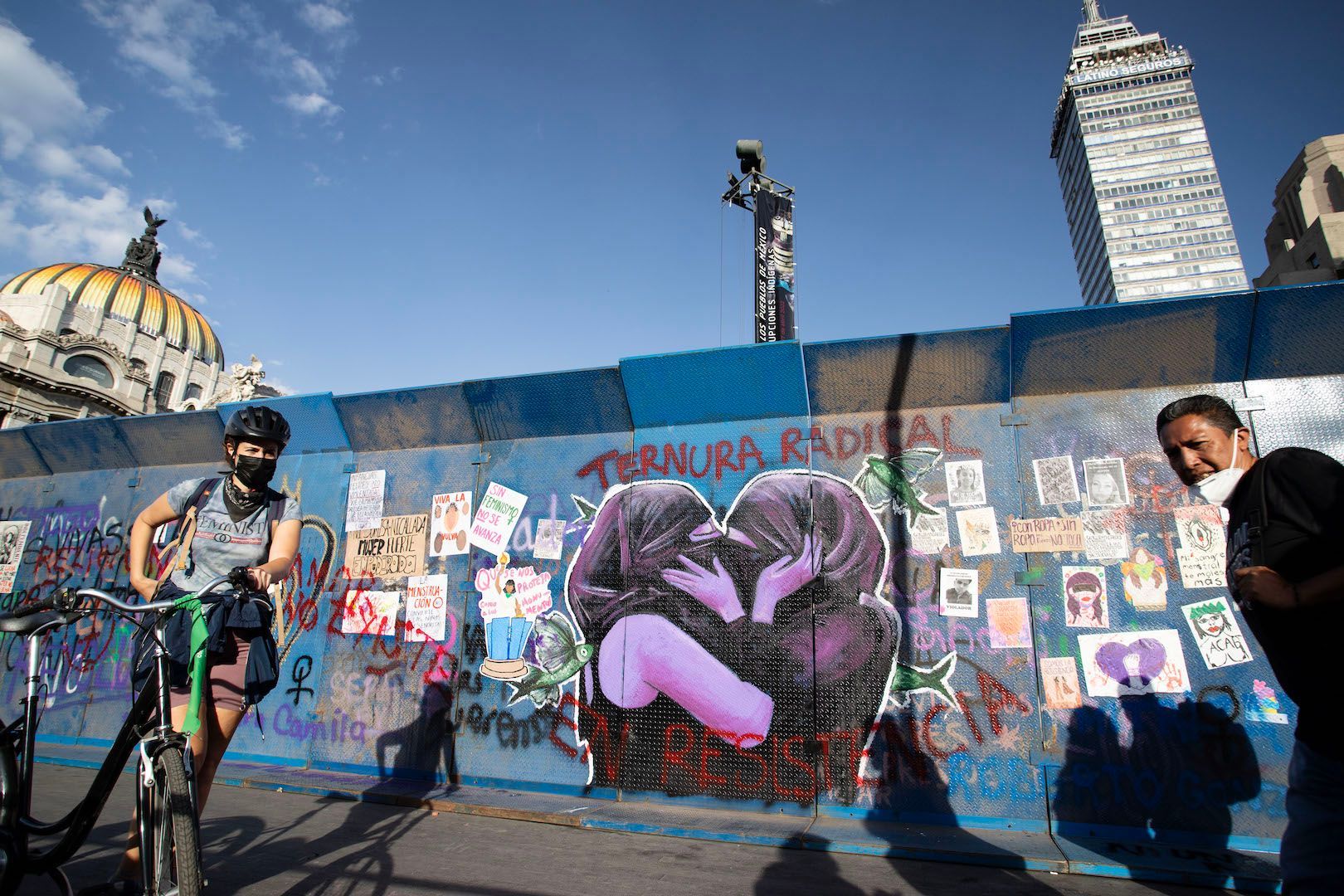
Reality, however, says otherwise. Women and men are therefore taking to the streets to seek justice. Every year, on International Women's Day, 8 March, tens of thousands of people march through the capital, Ciudad de México, which is symbolically bathed in purple or green for the day. The parade culminates in front of the presidential palace in the main square of the Zócalo. But the expression of support is also visible outside the parade, with posters calling for an end to the violence hanging all over the city and people across categories dressing in the colours mentioned.
Most of the rallies are peaceful, although accompanied by excited chanting. Nevertheless, they are accompanied by a heightened level of aggression and rioting, especially from the radical feminist core. Last year I went to document the event myself with my camera.
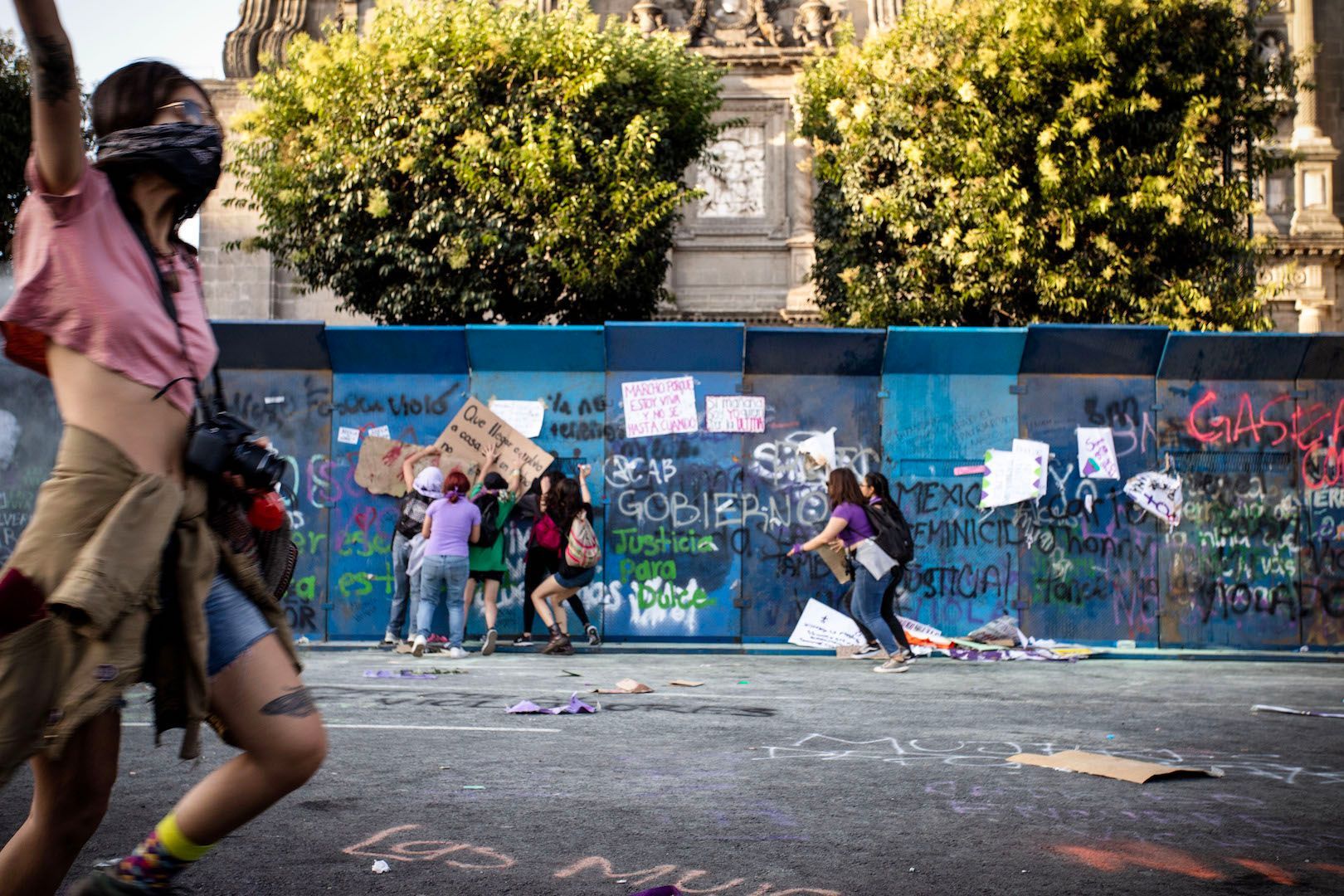
That being said, the main part of the march was peaceful. Occasionally, individuals broke off to spray paint nearby statues or buildings, so soon there were purple signs all over the streets calling for an end to violence against women and the patriarchy. Some of them wore balaclavas and, armed with hammers, picked off unlit shop windows, bus stops or advertising banners on their way to the main square.
Then the expected annual inferno broke out in front of the presidential palace, where metal barriers had been erected since the previous days. The radicals besieged the barriers and pounded them with whatever they had on them, occasionally aiming a spray can through a lighter. They were pepper sprayed in return, so many of them ended up in the care of paramedics.
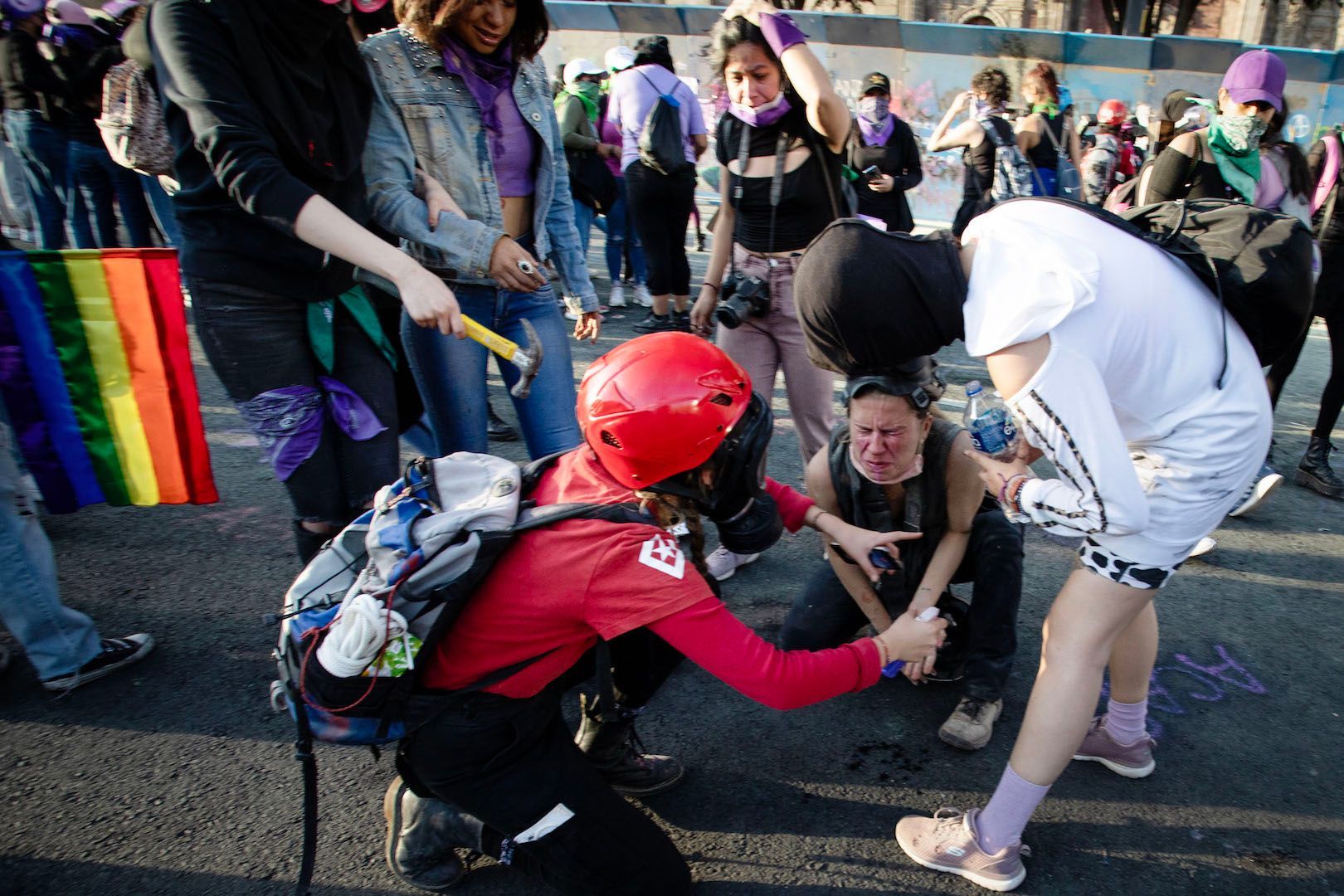
According to a correspondent for Spanish news agency EFE, not only hammers but also fireworks and demolition sledgehammers were confiscated at the scene, and some groups “went so far as to make Molotov cocktails”.
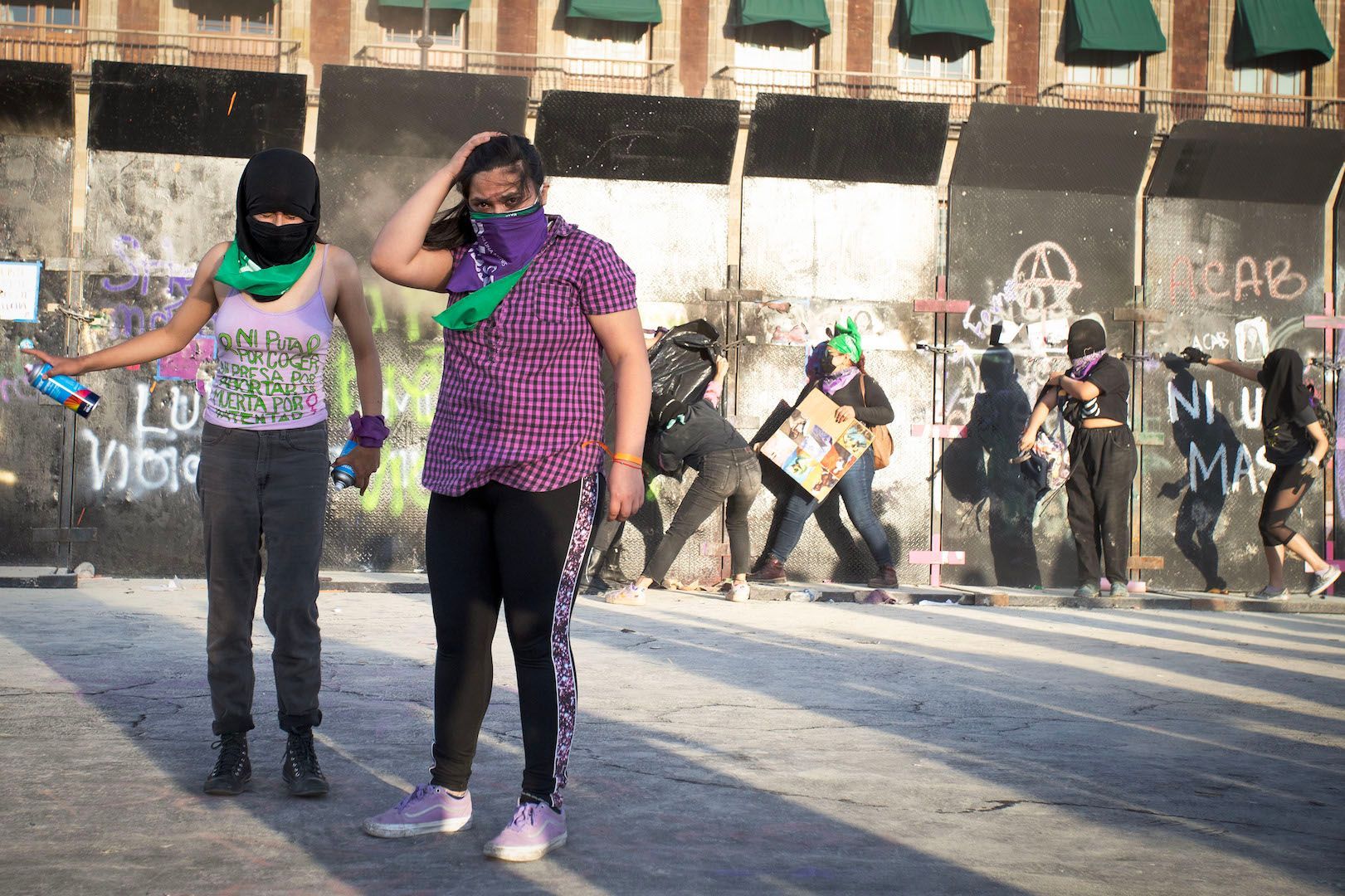
I lasted about an hour taking pictures before a taser crackled over my head and three girls in balaclavas stood facing me, one of whom was holding out a hammer with a sharp end and firmly telling me to get out.
The hard core remained in place until evening and several fires were lit in the square. According to official sources, eight female protesters and police officers were injured and hospitalized that day. The year before, there were ten times more.
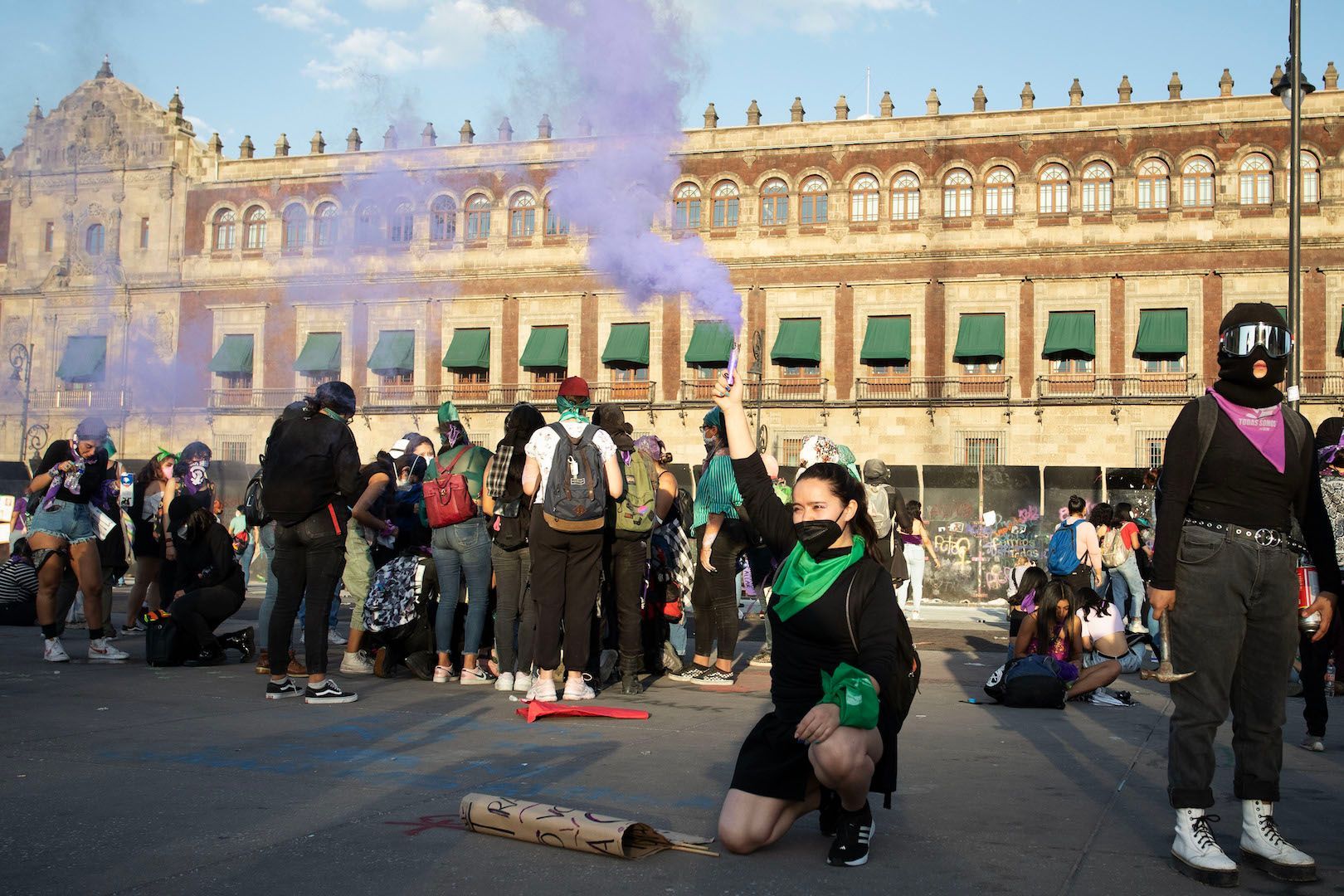
I wouldn’t say anything has changed since. But for sure it remained a subject people talk about.

